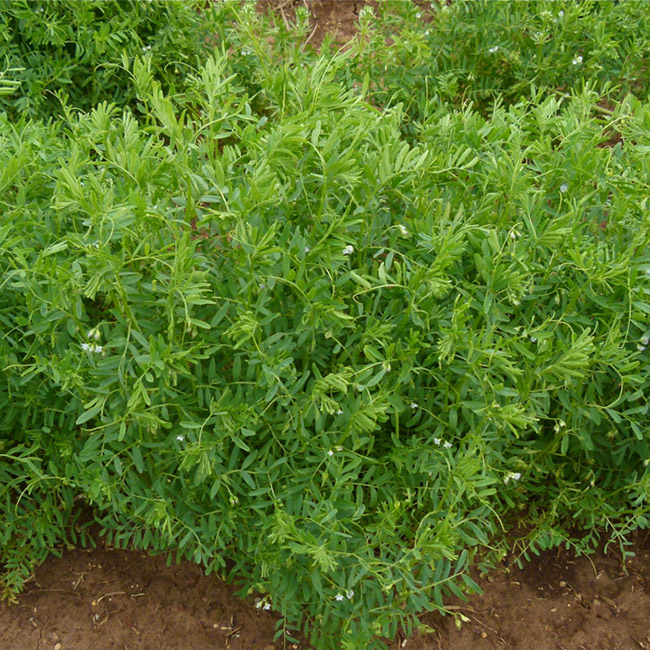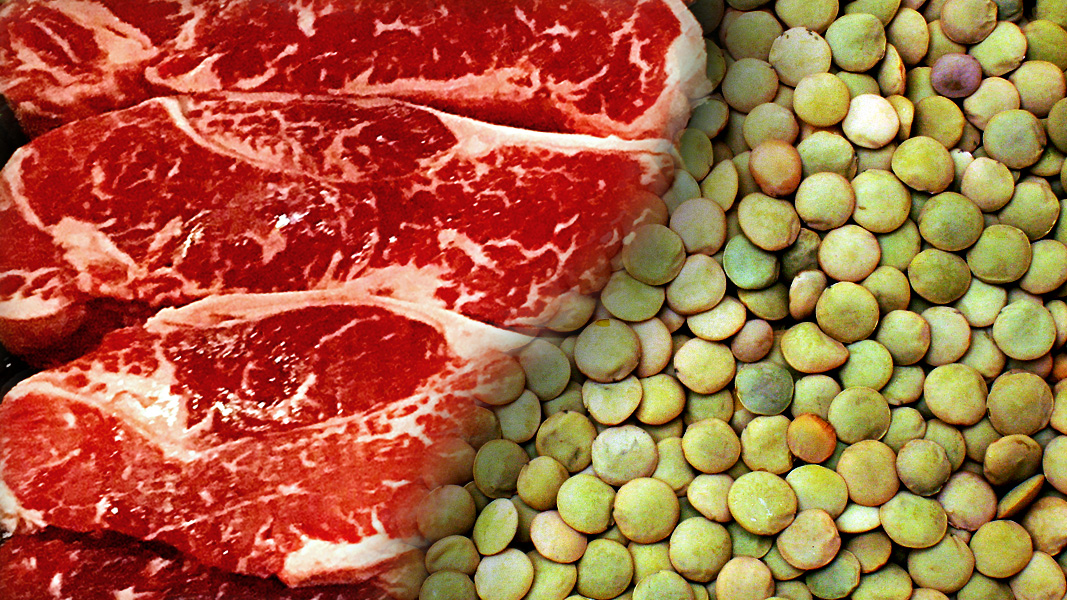Top: Photos courtesy of Sally Brown and Mostafameraji, CC BY-SA 4.0, via Wikimedia Commons (cropped by BioCycle).
 Sally Brown
Sally Brown
Typically for me, the topic of food waste starts at the critical juncture of scraping the plate or cleaning out the refrigerator. “Does it go to the compost pile or the landfill?” has been the organics equivalent of “To be or not to be.” While other sections of BioCycle have delved deep into food recovery and the importance of not wasting food to begin with, I’ve always been focused on the slimy stage of food. The part where it sports unnatural colors and interesting growths. The part where you compost it and use that to enrich soil.
I’ve recently realized that a discussion of wasted food also needs to include an understanding of what is involved in getting that food to your plate. Admittedly, I am a bit behind in this realization. Here I’m figuring that if I am behind, you might be too. If not, skip reading this column unless you enjoy some bad puns. A way to start this discussion is with the obvious: Beef.

Flowering lentil plants. Photo courtesy ChriKo, CC BY-SA 3.0, via Wikimedia Commons, (cropped by BioCycle).
Beef is typically cast as the dietary equivalent of driving a Hummer or flying first class. In contrast, a vegan diet that includes lentils is walking everywhere you go. What makes lentils so good and beef so bad? That requires a discussion of the life of a lentil and the life of a beef cow. Washington state, where I live, happens to be the #1 producer of lentils in the U.S. An average yield for lentils is 1,150 pounds/acre. Lentils are legumes, so they fix their own nitrogen. In Washington, the lentils are cultivated in the Palouse region where 18 to 23 inches of rain is normal and sufficient for the lentils to grow. No irrigation is required. If you eat 8 ounces of lentils a day, that comes to 182 pounds of lentils a year. One acre of lentils can feed 6.3 people for an entire year with no nitrogen fertilization required and no additional irrigation water required. The growing season for lentils is April through August. Typically, in Washington, wheat is planted as a winter crop in a rotation with lentils. In other words, the lentils occupy that acre for 6 months.
What’s The Beef
When you sit down to a beautifully seared, New York strip steak (I am not a vegetarian, let alone a vegan) you are eating a part of the cow who in turn had to eat his/her own share of food to get big enough to be fit to grace your grill. Cows start out eating grass, hopefully on bucolic pastures. Most are finished, or readied for slaughter, on a diet of grain. The first year of a cow’s life is spent in the pasture. The second year is typically spent in a confined animal feeding operation (CAFO). Cows are normally between 18 and 24 months when they are ready for slaughter.
The amount of pasture needed to keep a cow happy will depend on the grazing practices used and the quality of pasture. In Wisconsin, an average for intensively grazed pastures is 1.5 acres/head of cattle (Paine and Gildersleeve, 2011). Cows are ruminants, meaning they have multiple stomachs. They eat a lot of fiber. Just like people who eat a lot of fiber, cows have a high feces-to-food ratio. To gain weight, they must eat a lot. What that translates to in terms of your steak is that a cow has to eat between 4.5 and 7.5 pounds of grain to gain a pound. The term for this is the feed conversion ratio (FCR). A lower FCR translates to an animal that is faster to fatten and cheaper to raise. The average FCR for cattle is 6:1, or 6 dry pounds in for each pound of beef. For comparison, a chicken has an FCR of 2:1.
One publication (OMAFRA, 2018) compares how much a cow will have to eat in a finishing operation (CAFO) with a FCR of 6:1 and a FCR of 8:1. Cattle are commonly sent to these for their final 200 days before slaughter. The two cows in this example each came into the feedlot weighing 900 pounds. The 6:1 cow had to eat 4,200 pounds of feed to gain an additional 700 pounds. The 8:1 cow had to chow down on a whopping 5,600 pounds of feed to gain the same amount. The cows in this publication were ready to slaughter when they weighed 1,600 pounds.
The next thing to consider is how much meat you actually get from the cow. Here I turned to an extension publication from Iowa (Holland et al, 2011). The first ratio is the dressing percentage. That is what the “hot carcass” (the cow minus the head, skin, and organs) weighs in comparison to the live weight of the animal. A typical ratio is about 62% — or a little over half of the animal is left for consumption after slaughter. The actual take home beef is even less, as much of the fat, bones and a portion of the moisture won’t make it to your hamburger. The meat portion of the beef, including almost all the cuts that people eat, adds up to about 70% of the hot carcass weight. In terms of a New York strip, that part constitutes 1% of the total live weight of the animal.
The 38% of the cow that doesn’t go toward consumption is almost all used. Leather shoes, coats and belts are one example. Beef cheeks happen to taste really good and are another example. There are industrial uses for much of the remainder of the residuals. The paunch or guts are one portion that is notoriously hard to find a home for.
Doing The Math
We can back calculate how much food must be grown to get that steak on your plate. If a cow weighs 1,200 pounds at slaughter and has an average FCR of 6:1, that cow has eaten 7,200 pounds of food to get ready for your dinner. Once slaughtered and butchered, that same cow will yield 500 pounds of meat. To sum this up, if you have a steak for dinner, the cow that is the source of your sirloin had spent years and eaten tons to get ready. This calculation is somewhat oversimplified as most cattle gain their first several hundred pounds eating grass, not grain.
Finishing diets, or grain-based diets, are a way to make the cow gain weight faster and have the meat taste better. The grain diets lead to more fat gain and less muscle gain. That translates into more tender meat. Grass fed cattle, from start to finish, is an option. For this estimate, I’ll stick to cows finished with grain. The grain that the cows are fed is a mixture of corn and other grains. This is not an arbitrary snack as you go type of diet; rather it is a diet that has been studied and optimized to maximize weight gain. For this calculation, we can assume that the diet is 100% corn.
Now for the fun part. Average corn yield ranges from 100 to over 200 bushels per acre. A bushel of corn weighs 56 pounds. The corn will need nitrogen (N) to grow. One estimate was a pound of N for every bushel of corn. A 200-bushel yield needs 200 pounds of N. The corn also gets thirsty, requiring 24 to 28 inches of irrigation water per year in Nebraska, the Corn Husker state. About half of the corn grown in that state is irrigated. Two hundred bushels of corn weigh 11,200 pounds, or about enough for 2 cows to finish.
Now the math. Grazing requires 1.5 acres/cow for one year. Growing 1 acre of grain requires 200 lbs of N and 2-acre feet of water (1 acre foot = 325,851 gallons of water). The yield is 11,200 lbs of corn — or enough for two cows (1,000 pounds of meat). If you eat 8 ounces of beef a day, a 500 pound cow will feed about 1.4 people for a year. That will require 2 acres of land for 2 growing seasons, 100 pounds of nitrogen fertilizer and 1 acre foot of water.
With lentils, one acre feeds six people for a year and requires no additional N or irrigation. One acre for cattle feeds a part of a person per year and requires both N and irrigation. It is true that cow manure can be returned to the soil and that is something you can’t say for lentils. However, that isn’t nearly enough to cover the difference. There are ways to make raising cattle better for the planet. I will talk about that in a future column. But in the meantime, might I suggest that you check out recipes for Pasta e Lenticchie (pasta with lentils). It is one of my favorites. I enrich it with a little pancetta, some eggplant or some broccoli rabe. Good enough that I don’t even miss a New York strip.
Sally Brown, BioCycle Senior Adviser, is a Research Professor at the University of Washington in the College of the Environment.















